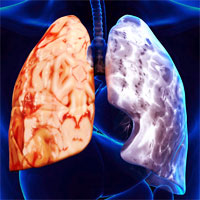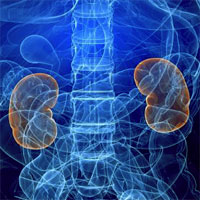Stories Category: Intensive Care

Predicting outcomes after trauma to the brain
UMMS researchers help develop novel tool to predict survival after penetrating brain injury. Using the new tool they developed, the SPIN-Score (Surviving Penetrating Injury to the Brain), two factors were by far the strongest... read more

Enhancing Delirium Case Definitions in Electronic Health Records
Delirium is an acute confusional state, associated with morbidity and mortality in diverse medically ill populations. Delirium may be better captured by composite outcomes, including both administrative claims data and elements... read more

Do No Harm: Stories of Life, Death, and Brain Surgery
With astonishing compassion and candor, leading neurosurgeon Henry Marsh reveals the fierce joy of operating, the profoundly moving triumphs, the harrowing disasters, the haunting regrets and the moments of black humor that... read more

The Timing of Early Antibiotics and Hospital Mortality in Sepsis
Prior sepsis studies evaluating antibiotic timing have shown mixed results. Objective: To evaluate the association between antibiotic timing and mortality among sepsis patients receiving antibiotics within 6 hours of emergency... read more

Is Intravenous Administration of Iodixanol Associated with Increased Risk of AKI, Dialysis, or Mortality?
Among patients at the highest perceived risk of post-contrast Acute Kidney Injury (AKI), intravenous administration of iodixanol for contrast material enhanced CT was not an independent risk factor for AKI, dialysis, or... read more

Hospital Factors May Influence NIV Outcomes Even in Low-Evidence Use
Strong evidence supports use of noninvasive ventilation (NIV) for patients with respiratory distress from chronic obstructive pulmonary disease and heart failure – i.e., strong evidence conditions (SECs). A new study of... read more

High Flow Nasal Cannula Use Outside of the ICU – Factors Associated with Failure
High FiO2 requirements, history of intubation, and cardiac co-morbidity are associative predictors of HFNC failure. Bronchiolitis patients may be treated with HFNC outside of the ICU with lower odds of failure. Two hundred... read more

Can we stop worrying about the age of blood?
Blood transfusions are common in critically ill patients; two in five adults admitted to an ICU receive at least one transfusion during their hospitalization. Recently, there has been growing concern about the potential dangers... read more

Enteral vs. Parenteral Early Nutrition in Ventilated Adults with Shock
In critically ill adults with shock, early isocaloric enteral nutrition did not reduce mortality or the risk of secondary infections but was associated with a greater risk of digestive complications compared with early isocaloric... read more

Review of Strategies to Reduce CLABSI and CAUTI in Adult ICUs
Central line–associated bloodstream infection (CLABSI) and catheter-associated urinary tract infection (CAUTI) are costly and morbid. Despite evidence-based guidelines, Some intensive care units (ICUs) continue to have... read more

Perspectives of Survivors, Families and Researchers on Key Outcomes for Research in ARF
There is heterogeneity among the outcomes evaluated in studies of survivors of acute respiratory failure (ARF). Patient, family and researcher groups supported inclusion of outcome domains that fit within the PICS framework.... read more
Are Biomarkers Ready for Prime Time?
Kyle Enfield, MD, speaks with John A. Kellum, MD, MCCM, about his talk presented at the 46th Critical Care Congress in Honolulu, Hawaii entitled, "Are Biomarkers Ready for Prime Time?" Dr. Kellum works as an Intensivist in... read more

Despite My Best Intentions
The resident looked worried and the intern was nervous. They were concerned about an elderly patient with low cardiac output heart failure. We reviewed our plans for the day, and as we entered his intensive care unit (ICU)... read more

Effect of treatment delay on the effectiveness and safety of antifibrinolytics in acute severe hemorrhage
Antifibrinolytics reduce death from bleeding in trauma and post-partum haemorrhage. We examined the effect of treatment delay on the effectiveness of antifibrinolytics. We obtained data for 40,138 patients from two randomised... read more

A simple algorithm for the identification of clinical COPD phenotypes
This study aimed to identify simple rules for allocating chronic obstructive pulmonary disease (COPD) patients to clinical phenotypes identified by cluster analyses.Data from 2409 COPD patients of French/Belgian COPD cohorts... read more

Accuracy and Applications of Lung Ultrasound to Diagnose VAP
Lung ultrasound (LUS) is an accurate tool to diagnose community-acquired pneumonia. However, it is not yet an established tool to diagnose ventilator-associated pneumonia (VAP). Small subpleural consolidations and dynamic... read more

RRT Modality in the ICU and Renal Recovery at Hospital Discharge
In this large retrospective study, intermittent hemodialysis as an initial modality was associated with lower renal recovery at hospital discharge among patients with acute kidney injury, although the difference seems somewhat... read more








